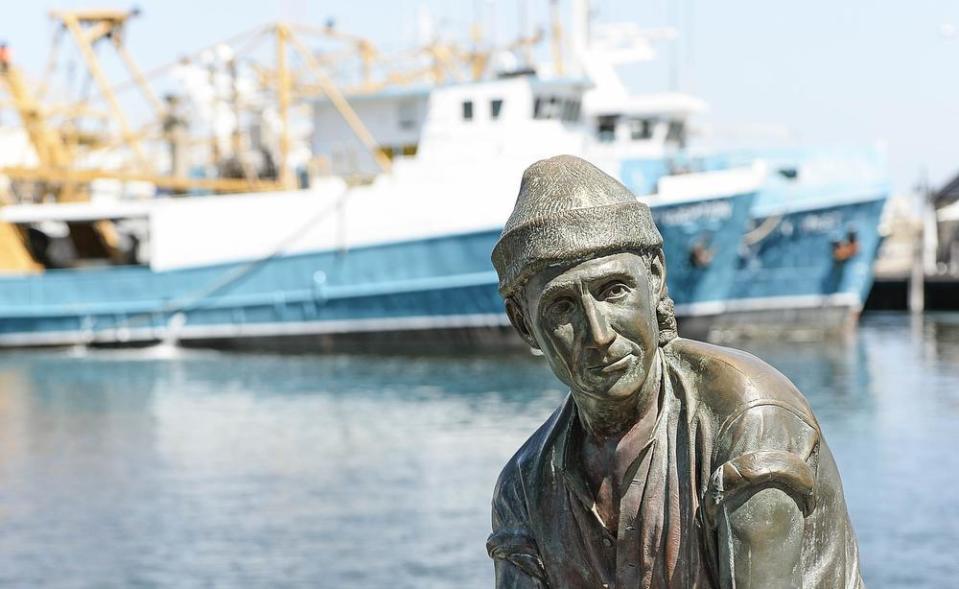Show’s hooked on fishing past

Fishing Boat Harbour and Bathers Beach will celebrate WA’s fishing heritage with the Fremantle Seafood Festival on Sunday.
The one-day event, backed by the City of Fremantle, the WA Fishing Industry Council (WAFIC) and the Fremantle Fishing Boat Harbour Traders’ Group, is an initiative ofThe West Australian and Premiere Events, which puts on the Club Marine Mandurah Boat Show and the Perth 4WD & Adventure Show in McCallum Park.
“It was run in conjunction with the Blessing of the Fleet in 2012 and 2013 but we believe it can become an iconic WA event,” organiser Peter Woods said. “People around the world are looking for unique food experiences and Fremantle fits the bill. The plan is to have it over two days next year and possibly over a week down the track.”
The event takes in the sardine festival, which ran for 11 years before organiser Jim Mendolia was forced to cancel it because of problems with public liability insurance.
Fremantle mayor Brad Pettitt said the port city had a proud seafood culture that had been part of its identity and the seafood festival had potential to become a highlight of WA’s food festival calendar.
“We welcome free events that attract visitors to the Fishing Boat Harbour area and highlight its history,” Dr Pettitt said. “Certainly I have some lovely childhood memories of eating fish and chips overlooking Fishing Boat Harbour.”
Fremantle’s links to WA’s commercial fishing industry go back to the late 19th century as Greek and Italian migrants set up base for family businesses, forming the Fremantle Fishermen’s Co-Operative in 1947 to market their catch.
The industry operates along 12,000km of coastline that stretches from Wyndham to Eucla, as well as out to sea in Commonwealth-controlled waters and as far south as Antarctica. It’s worth up to $500 million annually, with WA’s commercial rock lobster fishery valued between $400-$450 million alone.
“It’s WA’s biggest and most valuable fishery,” WAFIC chief executive John Harrison said. “Second-highest in value is the pearling industry, worth $60-$80 million annually.”
Add prawns, abalone and aquaculture with farmed barramundi, mussels, yellowtail kingfish, trout, marron and oysters, plus more than 40 additional commercial fisheries supplying a variety of seafood and marine products, including scalefish, sea cucumber, scallops and blue swimmer crabs, and WA’s reputation as a producer is assured.
Mr Harrison said there were many different facets to the industry which, for the most part, was a loose alliance of smaller family-based businesses. “The bigger sectors, such as rock lobster, have a certain amount of political clout and other sectors, such as pearling and aquaculture, can attract significant community support due to the nature of their products but the majority of WA’s commercial fisheries generally have fewer than 10 licensed operators.”
He said all commercial fisheries were strictly managed to agreed environmental and sustainability benchmarks.
“If you don’t look after the stocks — and that means looking after the ecosystems and habitats that support those stocks — then there is no industry,” he said.
The approach has given WA a strong international reputation, with 64 per cent of the State’s fisheries production worth $288 million exported in 2012. Nationally, though Australia imports 70 per cent of its seafood, most of it from Thailand, China and Vietnam, to meet demand.
“On a per capita basis, Australians eat an average of 16kg of seafood annually,” Mr Harrison said. “This is double the amount consumed a decade ago and is driven by a growing awareness of the health benefits of eating seafood.”

